The most important questions to ask when looking for an orthodontist
If you have crooked teeth and live in the Essex, Hornchurch area then you may well be looking for an orthodontist to help you straighten crooked teeth with braces.
But how do you know which dentist/orthodontist is best?
How do you know if you will get the treatment and service you are looking for?
In this blog post we go through some of the questions that we recommend you ask a dentist in order to help you decide if this is the right person for you.
How many years experience do you have?
The more cases your dentist or orthodontist have seen then the more likely it is they will be able to recognise the best course of treatment for you. There will also be more aware of potential problems which can arise from each of the different types of treatment, this means an experienced dentist or orthodontist may help you to avoid unforeseen problems in the future.
Which orthodontic systems do you offer?
There are a wide variety of orthodontic brace systems on the market, some systems are able to move teeth great distances, including back teeth. Some braces are more focused around the cosmetic anterior teeth.
Some systems offer rapid orthodontics whilst others offer low-cost and cheaper braces.
Whilst even more systems offer imperceptible orthodontics using clear aligners, clear brackets with tooth coloured wires or brackets on the tongue side of your teeth.
Ideally, visiting an Essex dentist which offers the widest range of orthodontic systems means you get the biggest choice and a system perfectly tailored to your requirements, clinical situation and budget.
Can you show me before and after photographs of previous cases you have treated.
Being able to see before and after photographs of cases similar to your own is a great way to understand the kind of results you can expect to achieve.
Be clear about what it is you want to correct, do you feel your top teeth stick out too much (overbite)? Is it that your top teeth are rotated and look crowded? Or something else? When you go to visit your orthodontist or dentist be very specific about what it is you don’t like and ask to see similar cases that they have treated before.
Can you show me reviews that patients have written about your orthodontic treatment?
Any good dental practice will gather together reviews and testimonials by happy patients. The key thing here is to see the reviews that have been left by patients that have specifically had orthodontics. That way you know that your dentist or orthodontist comes specifically recommended for the braces they offer.
How long will each treatment take?
Treatment times vary incredibly between different types of braces, anything from 9 weeks up to a couple of years! It really depends on the type of system and your clinical situation coupled with what you want to achieve.
Being very clear about how long you want the treatment to take, or even if you want it to be finished by a specific date or event can be really helpful when looking for an orthodontist to ensure you find one that offers braces which fitting with your timescale requirements.
What are the payment options for treatment?
As with many things in life orthodontic treatments can often be quite expensive. Asking about payment plans such as monthly or staged amounts or even 0% finance can make treatments much more affordable. Many orthodontic systems can be made available from as little as £42* per month.
How frequent will my follow-up visits the throughout the treatment?
Different dentists, orthodontists and braces systems have different follow-up protocols. Understanding how many times you may need to visit the dentist and how often can have a big impact on which dentist or orthodontist you choose.
In order to find this out you may find you need to have an initial consultation so that your clinician can take a look at the clinical situation and you can have a discussion about which brace system is right for you.
You will however typically need to visit the orthodontist or dentist once every 4-6 weeks for most orthodontic systems.
What levels of service and care will I receive?
We all know that service really matters, so what’s important to you about the service you receive? Would you like to communicate with the practice by phone, text or e-mail? Does the dentist or orthodontist offer the communication preferences you prefer?
Many practices offer online booking of appointments, is this important for you?
When you visit the practice, are you looking for a practice that is modern and new with the most up-to-date equipment?
Be clear about what it is you want to receive and what’s important to you, you can then look for clues as to whether the practice can offer this as well as asking them directly.
What hours do you open?
Many people work long and unsocial hours. If you need an orthodontist in Essex, local to you, then it’s important to find one that fits around your schedule.
Ask about early mornings and late evening appointments, you may also find that some practices offer Saturday appointments which can be useful if you live locally.
The last thing you want is a dentist where you are required to visit once every four weeks at appointment times that don’t fit in with your schedule, that can mean that your orthodontic appointments come delay and treatment times can then extend beyond what you initially expect.
*Subject to status. Conditions apply. Representative example. Cash price of braces £2000; 60 monthly payments of £42; total amount repayable £2520.22; representative 9.9% APR variable

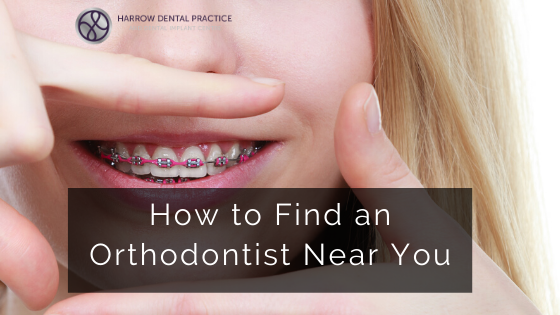
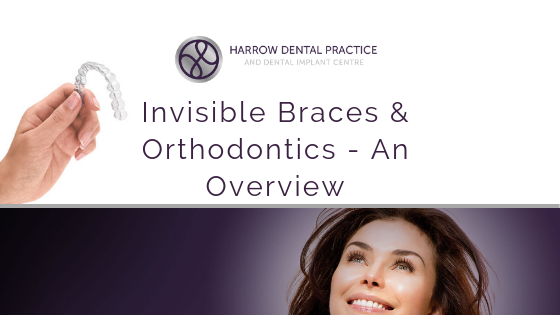
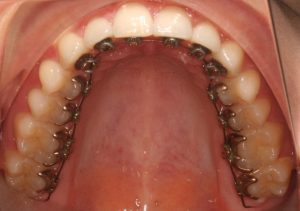
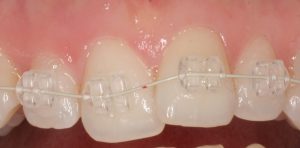 This is yet another cosmetic alternative to the standard braces. The archwire is made tooth coloured to reduce its visibility against the background formed by your teeth. And the brackets are made of transparent plastic or tooth coloured ceramic so that they are not noticed. In addition, clear or transparent ligatures are used to enhance aesthetics.
This is yet another cosmetic alternative to the standard braces. The archwire is made tooth coloured to reduce its visibility against the background formed by your teeth. And the brackets are made of transparent plastic or tooth coloured ceramic so that they are not noticed. In addition, clear or transparent ligatures are used to enhance aesthetics.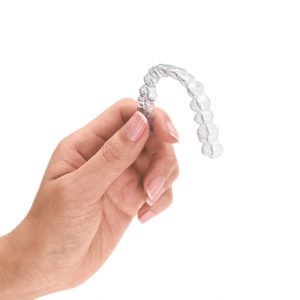 In the category of orthodontic teeth alignment appliances, the
In the category of orthodontic teeth alignment appliances, the